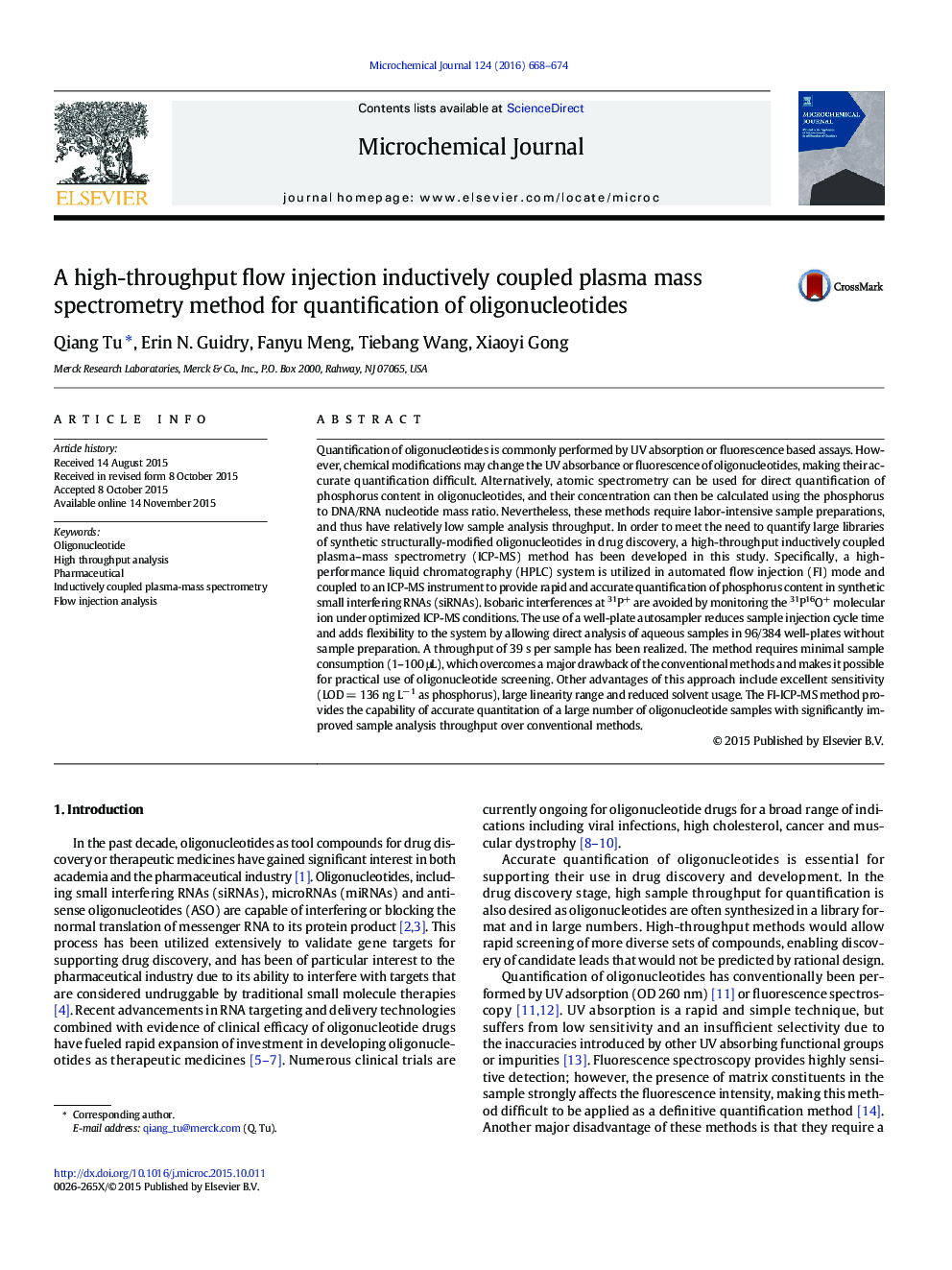| Article ID | Journal | Published Year | Pages | File Type |
|---|---|---|---|---|
| 7642460 | Microchemical Journal | 2016 | 7 Pages |
Abstract
Quantification of oligonucleotides is commonly performed by UV absorption or fluorescence based assays. However, chemical modifications may change the UV absorbance or fluorescence of oligonucleotides, making their accurate quantification difficult. Alternatively, atomic spectrometry can be used for direct quantification of phosphorus content in oligonucleotides, and their concentration can then be calculated using the phosphorus to DNA/RNA nucleotide mass ratio. Nevertheless, these methods require labor-intensive sample preparations, and thus have relatively low sample analysis throughput. In order to meet the need to quantify large libraries of synthetic structurally-modified oligonucleotides in drug discovery, a high-throughput inductively coupled plasma-mass spectrometry (ICP-MS) method has been developed in this study. Specifically, a high-performance liquid chromatography (HPLC) system is utilized in automated flow injection (FI) mode and coupled to an ICP-MS instrument to provide rapid and accurate quantification of phosphorus content in synthetic small interfering RNAs (siRNAs). Isobaric interferences at 31P+ are avoided by monitoring the 31P16O+ molecular ion under optimized ICP-MS conditions. The use of a well-plate autosampler reduces sample injection cycle time and adds flexibility to the system by allowing direct analysis of aqueous samples in 96/384 well-plates without sample preparation. A throughput of 39 s per sample has been realized. The method requires minimal sample consumption (1-100 μL), which overcomes a major drawback of the conventional methods and makes it possible for practical use of oligonucleotide screening. Other advantages of this approach include excellent sensitivity (LOD = 136 ng Lâ 1 as phosphorus), large linearity range and reduced solvent usage. The FI-ICP-MS method provides the capability of accurate quantitation of a large number of oligonucleotide samples with significantly improved sample analysis throughput over conventional methods.
Keywords
Related Topics
Physical Sciences and Engineering
Chemistry
Analytical Chemistry
Authors
Qiang Tu, Erin N. Guidry, Fanyu Meng, Tiebang Wang, Xiaoyi Gong,
